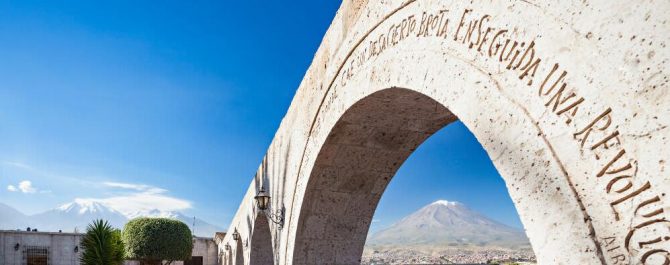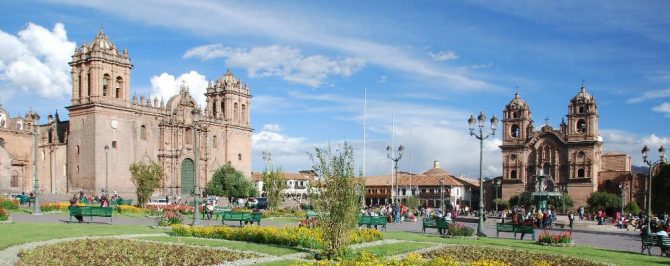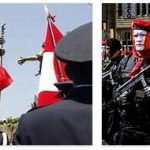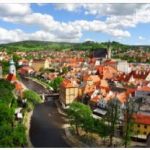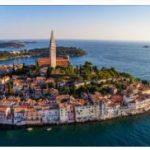San Pedro de Tacna, as it was originally called, is an ancient Peruvian city with a Chilean prehistory. Today it belongs to the city of Peru. Numerous monuments and streets are named after heroes from Peru’s independence struggle, as it was a time that radically affected the city’s development.
In Spanish, the inhabitants of Tacna are called tacneños. Tacna is also the tenth most populous city in Peru. The majority of the population are Catholics, while a minority are Muslims. Tacna is the city in the country that first allowed Muslims to erect religious buildings in the urban landscape. .
Tacna location
Tacna is located in the southern part of Peru, where the city acts as the capital of the region of the same name. Tacna is close to the border with the Chilean city of Arica. The short distance between the two cities has made their historical relationship close, as well as they continue to be related to this day.
Experiences in Tacna
The parabolic arc
inaugurated on August 28, 1959, and aims to honor and honor the war heroes Miguel Grau Seminario and Francisco Bolognesi. Both had fought hard during the Pacific War.
The huge arch is a full eighteen meters high and designed by German technicians, despite the fact that the foundry itself took place in Lima. The parabolic arch is an iconic site for Tacna, where a small ceremony is held in front of the monument every Sunday. The following is always said here:
My Colonel Bolognesi has sacred duties to fulfill and observe until the last patron .
Tacna Cathedral
Like most other major cities in Peru, Tacna has its very own cathedral. This accomplished beautiful building is located on the city’s central square, where the Tacna’s ancient and first temple also had its location.
Construction of the cathedral began on March 6, 1875, with engineer Carlos Petos and architect Tadeo Strujemski leading the construction. In the year 1878 the construction work of the cathedral froze when the construction company got into difficulties.
Despite the fact that the church bell was put in place in the tower on August 28, 1929, it took another 21 years before the government found funds to complete the project. To this day, the cathedral stands and thrones as the pride of the city.
Bab ul Islam Mosque
Peru is a Catholic country and expressions of other religions are rarely seen. In the year 2000, the country’s first mosque was built in Tacna. Until then, there had been no visible Muslim architecture in the country, and those who practiced Islam lived in neutral buildings in Lima.
What turned the religious eye was the arrival of 95 Pakistanis to Tacna back in 1995. As far as is known, this group was the first to cultivate Islam within the borders of Peru. By the end of the 20th century, about 500 Pakistanis had immigrated to Tacna, and the Bab ul Islam Mosque was built.
To this day, Bab ul Islam remains Peru’s largest mosque. Despite this, the Pakistanis in Tacna remain not fully integrated. However, the mosque is used uncommented for the practice of the Muslim residents of the city.
San Francisco Miculla petroglyphs
About 22 kilometers from Tacna, lies an absolutely magical area. When you visit Miculla petroglyphs, it takes place in beautiful desert-like surroundings where the sand is red and glowing. Whether you come to admire the surroundings, or to see the prehistoric petroglyphs, it is worth the experience.
The petroglyphs are prehistoric signs and images carved into flat pieces of rock. San Francisco Miculla petroglyphs depict peoples in battle, dancing Peruvians and hungry hunters. The petroglyphs are believed to be 1500 years old.
A good piece of advice is to experience the area with a guide at hand. Signs have been put up throughout the area with information and stories about the ancient petroglyphs, but many of them are in Spanish. Accompanied by a guide, you are assured of all the prehistoric tales anyway.
Tacna history
Italian surnames
Already at the beginning of Peru’s struggle for independence, Tacna appeared on the scene with a push, issued by Royal Auditor Francisco Antonio De Zela in 1811. About fifteen years later, the struggle culminated and Tacna was declared a heroic city.
Subsequently, Tacna was selected as the capital of the short-lived Peru-Bolivia Confederation in the period from 1836-1839. In the time after the union was abolished, prosperity increased in Tacna. This attracted larger waves of Italian immigrants. That is why many tacneños have Italian surnames.
Pacific War
During the Pacific War, which ended first with Chile on one side and Peru and Bolivia on the other, Tacna’s prosperity declined drastically. Both trade and agriculture began to falter. Both Tacna and the then Peruvian city of Arica were occupied by Chile.
In the year 1883 a peace treaty was signed. The content of the treaty was that Chile would continue to occupy the cities for the next ten years. Next, a referendum would fall, and this would determine the sovereignty of cities. However, 50 years passed during which Tacna was under Chilean rule.
On an ongoing basis, the Chilean authorities ran campaigns in the hope that Tacna’s locals would abandon their Peruvian past and register as Chilean citizens. This never succeeded, however, and by the year 1929, Tacna was again a Peruvian city. Arica, on the other hand, remained under Chilean rule.
